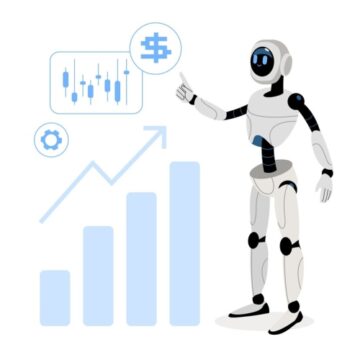Decentralized AI | March 25, 2024

 Image: David Paul Morris, Bloomberg
Image: David Paul Morris, BloombergStability AIs CEO Jumps Ship: “Not going to beat centralized AI with centralized AI”
As reported in Techcrunch, the CEO of Stability AI, Emad Mostaque, recently resigned from it’s mission of centralized AI to a decentralized approach which was deemed a necessity due to the growing concerns over data privacy, security, and the monopolization of AI technologies by a few large entities. Mostaque’s resignation is rooted in the belief that the future of AI should not be dictated by centralized entities but should instead embrace a decentralized approach to foster innovation and ensure equitable access.
However it’s important to know that Stability AI, a startup renowned for its widely-used image creation software, Stable Diffusion, was reportedly spending around $8 million a month as of October 2023, with unsuccessful attempts to raise new funding at a $4 billion valuation. This financial strain illustrates the unsustainable nature of centralized AI models, which require significant resources for data processing and storage.
Not going to beat centralized AI with more centralized AI.
All in on #DecentralizedAI
Lots more 🔜 https://t.co/SbEF5zoo05
— Emad acc/acc (@EMostaque) March 23, 2024
“We should have more transparent & distributed governance in AI as it becomes more and more important. Its [sic] a hard problem, but I think we can fix it..the concentration of power in AI is bad for us all. I decided to step down to fix this at Stability & elsewhere.”
Comparing Decentralized versus Centralized AI
The table below highlights some of the fundamental differences between centralized and decentralized AI systems in terms of control, data processing, scalability, security, resilience, and the potential for innovation.
| Feature | Centralized AI | Decentralized AI | Example |
|---|---|---|---|
| Control | Single entity controls the AI system and processes. | Control is distributed across multiple nodes or entities. | Google’s DeepMind vs. Openfabric. |
| Data Processing | Data is processed in a central location, often leading to bottlenecks. | Data is processed across various nodes, reducing bottlenecks. | Traditional cloud-based AI services vs. Blockchain-based AI projects like Ocean Protocol. |
| Scalability | Limited by the capacity of the central server. Scaling up requires significant resources. | Enhanced scalability due to the distributed nature of processing and storage. | Web application servers vs. Distributed ledger technologies (DLTs) for AI. |
| Security and Privacy | Single point of failure makes it more vulnerable to attacks and privacy breaches. | Increased security and privacy due to data being processed locally and distributed across nodes. | Centralized data centers vs. AI models running on blockchain technology. |
| Resilience and Redundancy | Susceptible to downtime if the central server fails. | High resilience and redundancy, as other nodes can take over if one fails. | Network File System (NFS) vs. Decentralized networks like IPFS for AI data storage. |
| Innovation and Collaboration | Innovation may be limited to the controlling entity’s resources and direction. | Promotes collective intelligence and collaboration, fostering innovation. | Proprietary AI algorithms vs. Collaborative AI projects with open-source contributions. |
See: Addressing The Paradox of Governance Tokens
Further, the table provides real life examples of how AI is being applied in the consumer retail sector, distinguishing between centralized and decentralized approaches. Centralized AI examples typically involve large corporations leveraging AI for internal optimizations and customer-facing applications. In contrast, decentralized AI examples focus on leveraging blockchain and distributed ledger technologies to democratize access, enhance security, and improve transparency across various retail processes.
| Sector | Centralized AI Example | Decentralized AI Example | Description |
|---|---|---|---|
| E-commerce | Amazon’s recommendation engine | OpenBazaar (peer-to-peer e-commerce) | Centralized AI systems like Amazon use AI to personalize shopping experiences, while decentralized platforms like OpenBazaar allow for direct transactions without intermediaries. |
| Supply Chain Management | Walmart’s supply chain optimization | VeChain (supply chain logistics) | Walmart utilizes centralized AI for efficient supply chain management, whereas VeChain offers a decentralized solution for supply chain logistics, enhancing transparency and traceability. |
| Customer Service | Zendesk’s AI-powered support | SingularityNET (decentralized AI services) | Centralized AI solutions like Zendesk automate customer service processes, while SingularityNET provides decentralized AI services that could be used for more personalized customer support. |
| Payment Systems | PayPal’s fraud detection AI | Stellar (decentralized payment network) | PayPal uses centralized AI to detect and prevent fraud, while Stellar’s decentralized network facilitates cross-border payments with lower fees. |
| Retail Analytics | IBM Watson for retail analytics | Ocean Protocol (data sharing and analytics) | IBM Watson provides centralized AI analytics for retail, whereas Ocean Protocol offers a decentralized data marketplace for secure data sharing and analytics. |
So What’s Right for Investors and Builders?
Deciding whether centralized or decentralized AI is better depends on whether you’re investing in or building an AI solution, and it hinges on various factors including your goals, resources, market needs, and the specific challenges you aim to address.
See: A16z’s 2024 Big Ideas for Fintech, AI and Crypto
Here’s a breakdown to help guide your decision:
Centralized AI For Investors
- Centralized AI technologies are generally more mature and have proven business models, making them potentially safer investments.
- Large, established companies offering centralized AI solutions often have the infrastructure to scale quickly and efficiently.
- Investing in companies with centralized AI solutions can offer quicker returns due to their established market presence and customer base.
- Centralized AI systems may face stricter regulatory scrutiny, especially concerning data privacy and monopolistic practices.
- Centralized systems might be slower to innovate due to their size and bureaucratic hurdles.
Decentralized AI for Investors
- Decentralized AI is at the forefront of innovation, offering unique solutions that could disrupt traditional markets.
- Projects often have vibrant communities and benefit from network effects, which can rapidly increase the value of an investment.
- Investing in decentralized AI aligns with broader trends towards decentralization, blockchain, and cryptocurrency, areas with significant growth potential.
- The decentralized AI landscape is newer and more volatile, presenting higher risks to investors.
See: When Tech and Humanity Clash: AI Dilemma at SXSW
- Decentralized AI projects may face technical challenges and slower adoption rates due to the complexity of blockchain technologies and the need for a paradigm shift in user behavior.
Centralized AI for Builders
- Centralized systems offer complete control over the AI models and data, facilitating easier management and optimization.
- Easier integration with existing technologies and infrastructures.
- Centralized AI can be more resource-efficient in terms of development and maintenance, given existing frameworks and cloud infrastructures.
- Building and scaling centralized AI solutions can be costly due to the need for significant computational resources and data storage capabilities.
- Centralized systems have a single point of failure, making them potentially more vulnerable to attacks or outages.
Decentralized AI for Builders
- Decentralized systems are more resilient to failures and attacks due to their distributed nature.
- Enhanced data privacy and security features, appealing in today’s privacy-conscious market.
- The ability to create novel solutions that could disrupt traditional markets or create entirely new ones.
See: As AI-driven IPOs Take Center Stage, What Could go Wrong?
- Building decentralized AI solutions involves navigating the complexities of blockchain technology, which can be a steep learning curve.
- Ensuring efficient operation across a decentralized network can be challenging, especially in terms of computational and storage resources.
Ultimately, the choice between centralized and decentralized AI depends on your risk tolerance, market understanding, and alignment with long-term technological trends. Investors might find centralized AI a safer bet in the short term but could miss out on the disruptive potential of decentralized AI. Builders, on the other hand, need to consider their technical capabilities, target market, and the unique value proposition of their AI solution when choosing between these approaches.
Conclusion
The resignation of Stability AI’s CEO, Emad Mostaque, to develop decentralized AI solutions is paving the way for a future where AI is accessible, transparent, and equitably governed. For investors, the choice between centralized and decentralized AI hinges on balancing the maturity and proven success of centralized models against the innovative potential and growth opportunities offered by decentralized projects. Meanwhile, builders face the decision of leveraging the control and efficiency of centralized AI against the resilience, security, and disruptive potential of decentralized models. Each path offers distinct advantages and challenges, informed by factors such as market needs, regulatory landscapes, and the overarching goal to foster an AI future that benefits all.

 The National Crowdfunding & Fintech Association (NCFA Canada) is a financial innovation ecosystem that provides education, market intelligence, industry stewardship, networking and funding opportunities and services to thousands of community members and works closely with industry, government, partners and affiliates to create a vibrant and innovative fintech and funding industry in Canada. Decentralized and distributed, NCFA is engaged with global stakeholders and helps incubate projects and investment in fintech, alternative finance, crowdfunding, peer-to-peer finance, payments, digital assets and tokens, artificial intelligence, blockchain, cryptocurrency, regtech, and insurtech sectors. Join Canada’s Fintech & Funding Community today FREE! Or become a contributing member and get perks. For more information, please visit: www.ncfacanada.org
The National Crowdfunding & Fintech Association (NCFA Canada) is a financial innovation ecosystem that provides education, market intelligence, industry stewardship, networking and funding opportunities and services to thousands of community members and works closely with industry, government, partners and affiliates to create a vibrant and innovative fintech and funding industry in Canada. Decentralized and distributed, NCFA is engaged with global stakeholders and helps incubate projects and investment in fintech, alternative finance, crowdfunding, peer-to-peer finance, payments, digital assets and tokens, artificial intelligence, blockchain, cryptocurrency, regtech, and insurtech sectors. Join Canada’s Fintech & Funding Community today FREE! Or become a contributing member and get perks. For more information, please visit: www.ncfacanada.org
Related Posts
- SEO Powered Content & PR Distribution. Get Amplified Today.
- PlatoData.Network Vertical Generative Ai. Empower Yourself. Access Here.
- PlatoAiStream. Web3 Intelligence. Knowledge Amplified. Access Here.
- PlatoESG. Carbon, CleanTech, Energy, Environment, Solar, Waste Management. Access Here.
- PlatoHealth. Biotech and Clinical Trials Intelligence. Access Here.
- Source: https://ncfacanada.org/stability-ai-ceo-resigns-to-pursue-decentralized-ai/
- :is
- :not
- :where
- $UP
- 150
- 19
- 200
- 2018
- 2023
- 2024
- 21
- 23
- 25
- 300
- 33
- 5
- 6
- 62
- 7
- 8
- 9
- a
- ability
- access
- accessible
- across
- address
- addressing
- Adoption
- advantages
- affiliates
- against
- AI
- AI Data
- AI models
- AI services
- AI systems
- AI-powered
- aim
- ais
- algorithms
- alignment
- Aligns
- All
- allow
- alternative
- alternative finance
- Amazon
- an
- analytics
- and
- appealing
- Application
- applications
- applied
- approach
- approaches
- ARE
- areas
- around
- artificial
- artificial intelligence
- AS
- Assets
- At
- Attacks
- Attempts
- automate
- Bad
- balancing
- base
- BE
- beat
- become
- becomes
- behavior
- being
- below
- benefit
- benefits
- Bet
- Better
- between
- Big
- Billion
- blockchain
- blockchain technologies
- blockchain technology
- blockchain-based
- Bloomberg
- bottlenecks
- breaches
- Breakdown
- broader
- builders
- Building
- bureaucratic
- business
- business models
- but
- by
- cache
- CAN
- Canada
- capabilities
- Capacity
- Center
- center stage
- Centers
- central
- centralized
- ceo
- chain
- challenges
- challenging
- choice
- choosing
- Clash
- closely
- Cloud
- collaboration
- collaborative
- Communities
- community
- Companies
- complete
- complexities
- complexity
- computational
- concentration
- concerning
- Concerns
- Consider
- consumer
- contrast
- contributions
- control
- controlling
- controls
- Corporations
- costly
- could
- create
- creation
- cross-border
- cross-border payments
- Crowdfunding
- crypto
- cryptocurrency
- curve
- customer
- Customer Service
- Customer Support
- data
- data centers
- data privacy
- Data Privacy and Security
- data processing
- data sharing
- data storage
- David
- Decentralization
- decentralized
- decentralized network
- decentralized networks
- decided
- decision
- deemed
- DeepMind
- democratize
- depends
- detect
- Detection
- develop
- Development
- dictated
- differences
- Diffusion
- digital
- Digital Assets
- dilemma
- direct
- direction
- Disrupt
- disruptive
- distinct
- distributed
- Distributed Ledger
- dlts
- down
- downtime
- due
- e-commerce
- each
- easier
- ecosystem
- Education
- effects
- efficiency
- efficient
- efficiently
- elsewhere
- embrace
- engaged
- enhance
- enhancing
- ensure
- entirely
- entities
- entity
- equitable
- especially
- established
- Ether (ETH)
- examples
- existing
- Experiences
- Face
- facilitates
- facilitating
- factors
- fails
- Failure
- failures
- Features
- Fees
- few
- File
- finance
- financial
- financial innovation
- Find
- fintech
- Fix
- Focus
- For
- For Investors
- forefront
- Foster
- fostering
- frameworks
- fraud
- fraud detection
- from
- fundamental
- funding
- funding opportunities
- future
- Future of AI
- generally
- get
- given
- Global
- Go
- goal
- Goals
- going
- governance
- Government
- Growing
- Growth
- growth potential
- guide
- hand
- Hard
- Have
- help
- helps
- High
- higher
- highlights
- hinges
- How
- http
- HTTPS
- Humanity
- Hurdles
- i
- ideas
- if
- illustrates
- image
- important
- improve
- in
- Including
- Increase
- industry
- information
- informed
- Infrastructure
- infrastructures
- innovate
- Innovation
- innovative
- instead
- Insurtech
- integration
- Intelligence
- intermediaries
- internal
- investing
- investment
- Investments
- Investors
- involve
- involves
- IPFS
- IPOs
- IT
- ITS
- Jan
- jpg
- jumps
- Know
- landscape
- landscapes
- large
- leading
- learning
- Ledger
- leveraging
- Life
- like
- Limited
- locally
- location
- logistics
- long-term
- lower
- maintenance
- MAKES
- Making
- management
- March
- Market
- marketplace
- Markets
- mature
- maturity
- max-width
- May..
- Meanwhile
- member
- Members
- might
- million
- miss
- Mission
- models
- more
- multiple
- Nature
- navigating
- necessity
- Need
- needs
- network
- network effects
- networking
- networks
- New
- New Funding
- newer
- nodes
- ocean
- Ocean Protocol
- october
- of
- offer
- offered
- offering
- Offers
- often
- on
- ONE
- ones
- open source
- operation
- opportunities
- optimization
- optimizations
- or
- Other
- out
- Outages
- over
- overarching
- paradigm
- Paradox
- partners
- path
- Paul
- Paving
- payment
- payments
- peer to peer
- perks
- personalize
- Personalized
- Platforms
- plato
- Plato Data Intelligence
- PlatoData
- please
- Point
- potential
- potentially
- power
- practices
- presence
- presenting
- privacy
- Privacy and Security
- Problem
- processed
- processes
- processing
- projects
- proposition
- protocol
- proven
- provides
- pursue
- quicker
- quickly
- raise
- rapidly
- Rates
- RE
- real
- real life
- recently
- Recommendation
- reducing
- Regtech
- regulatory
- Renowned
- reportedly
- require
- requires
- Resignation
- resigned
- resilience
- resilient
- Resources
- retail
- returns
- right
- Risk
- risks
- rooted
- running
- s
- safer
- Scalability
- Scale
- scaling
- scrutiny
- sector
- Sectors
- secure
- security
- server
- Servers
- service
- Services
- sharing
- shift
- Shopping
- Short
- should
- significant
- single
- Size
- slower
- Software
- solution
- Solutions
- some
- specific
- Spending
- Stability
- stable
- Stage
- stakeholders
- startup
- steep
- Stellar
- Step
- Stewardship
- storage
- stricter
- success
- such
- supply
- supply chain
- supply chain management
- support
- system
- Systems
- table
- Take
- Target
- tech
- Technical
- technological
- Technologies
- Technology
- term
- terms
- that
- The
- The Future
- their
- Them
- These
- Think
- this
- thousands
- to
- today
- Tokens
- tolerance
- towards
- Traceability
- traditional
- traditional markets
- Transactions
- Transparency
- transparent
- Trends
- typically
- understanding
- unique
- us
- use
- used
- User
- uses
- utilizes
- Valuation
- value
- various
- VeChain
- Versus
- vibrant
- Visit
- volatile
- vs
- Vulnerable
- was
- Watson
- Way..
- we
- What
- when
- whereas
- whether
- which
- while
- Wikipedia
- with
- without
- works
- Wrong
- you
- Your
- Zendesk
- zephyrnet











